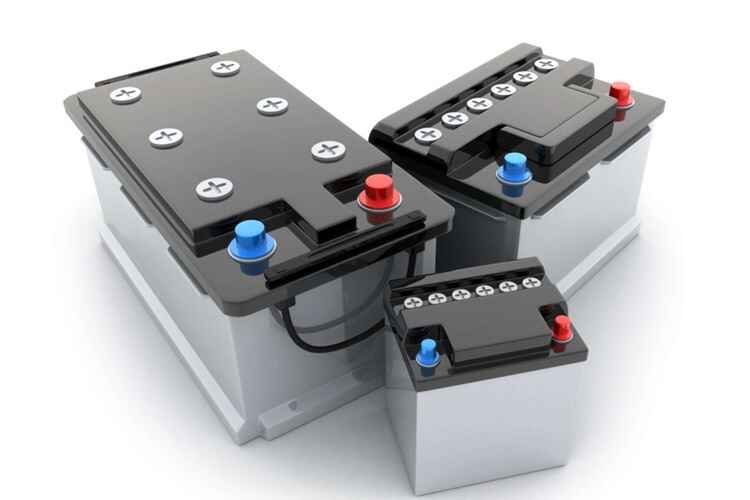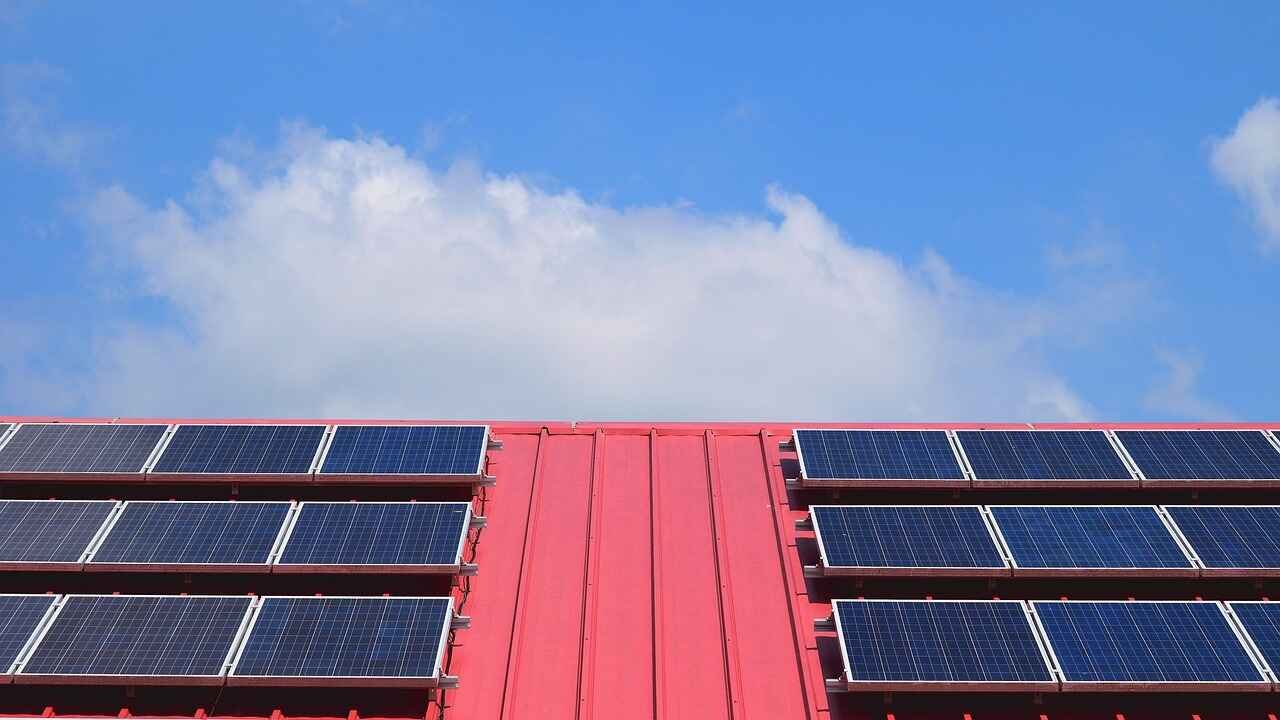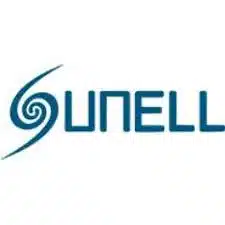Blogs
Grid Connection Challenges for Solar Farms in the UK: Overcoming Barriers

Explore the challenges of grid connection for solar farms in the UK and learn how to overcome these obstacles to ensure a smooth transition to renewable energy. Solar energy is a growing industry in the UK. Solar farms are essential for sustainable energy.
Yet, connecting these solar farms to the grid is not easy. There are several challenges faced during this process. From complex regulations to technical issues, the journey is tough. Understanding these challenges is crucial for future projects. In this blog post, we will explore the grid connection challenges for solar farms in the UK.
We will discuss the hurdles that developers encounter. This will help you understand the intricacies involved. Stay with us to gain insights into the world of solar energy and its connection to the national grid.
Current State Of Grid Infrastructure
The grid infrastructure in the UK faces significant challenges. These challenges impact the growth of solar farms. Understanding these issues is crucial for future planning. Let’s explore some key problems affecting grid connection.
Capacity Issues
The current grid struggles with capacity. Many regions cannot handle new solar farms. This limitation slows down the adoption of solar power. More solar farms need more grid capacity. Without upgrades, the grid can’t support growth.
Aging Equipment
Much of the UK’s grid equipment is old. Aging infrastructure leads to inefficiencies. Old equipment breaks down more often. This results in unreliable service. New solar farms need a modern grid. Upgrading equipment is essential for reliability.
Regulatory Hurdles
Regulatory hurdles present significant challenges for grid connection of solar farms in the UK. These obstacles can delay projects and increase costs. Understanding these hurdles is crucial for successful solar farm development.
Permitting Process
The permitting process for solar farms involves various steps. Developers must obtain planning permission from local authorities. This step often includes an environmental impact assessment. The process can be lengthy and complex. Delays are common.
Local communities may raise objections. Public consultations are part of the process. Gaining community support is vital. Without it, projects might face rejection. Clear communication with stakeholders can help. Informing them about benefits can ease concerns.
Compliance Requirements
Solar farms must comply with strict regulations. These include safety standards and grid connection codes. Compliance ensures reliable and safe operation. It also prevents potential disruptions to the power grid.
Adhering to these requirements can be challenging. Developers need to stay updated on regulatory changes. Regular audits and inspections are often necessary. Non-compliance can lead to fines or project shutdowns.
Meeting these regulations requires careful planning. Working with experienced consultants can be beneficial. They can guide developers through the compliance process. Ensuring all standards are met is essential for project success.
Technical Challenges
Solar farms in the UK face grid connection challenges. These issues include high costs and lengthy approval processes. Upgrading infrastructure and managing grid capacity also pose significant hurdles.
When it comes to integrating solar farms into the UK’s power grid, there are several technical challenges that must be addressed to ensure a smooth and efficient transition. Solar energy, while abundant and renewable, presents unique difficulties for grid stability and energy storage. These challenges can impact the reliability and efficiency of solar power generation. Let’s delve into these critical aspects.
Grid Stability
One of the primary technical challenges is maintaining grid stability. Solar power generation is inherently intermittent due to the variability of sunlight. On a cloudy day or during the night, energy production can drop significantly. This inconsistency can cause fluctuations in the power supply, making it difficult to maintain a stable grid. To illustrate, imagine a particularly cloudy week where solar output drops.
The grid must compensate for this dip by ramping up other power sources quickly. If not managed properly, this can lead to voltage instability and even power outages. You might wonder, how can we address this issue? One solution is to use advanced grid management systems that can predict solar power generation and adjust other energy sources accordingly. These systems use real-time data and sophisticated algorithms to balance supply and demand.
Energy Storage
Energy storage is another critical component in addressing grid connection challenges for solar farms. Because solar energy is not always available, storing excess energy during peak production times is essential. This stored energy can be used when solar generation is low, ensuring a continuous power supply. Battery storage systems are currently the most viable solution.

They can store large amounts of energy and release it when needed. However, they come with their own set of challenges, such as high costs and limited storage capacity. Consider this: during a sunny summer day, a solar farm may produce more energy than the grid needs. Without adequate storage, this excess energy could be wasted. Effective energy storage solutions, like high-capacity batteries, can capture this surplus energy and make it available during cloudy days or at night. But here’s a thought-provoking question: Can we develop more cost-effective and efficient storage solutions? The answer lies in ongoing research and technological advancements.
Innovations in battery technology and alternative storage methods, like pumped hydro storage, could make energy storage more practical and affordable. In summary, addressing the technical challenges of grid stability and energy storage is crucial for the successful integration of solar farms into the UK’s power grid. By leveraging advanced grid management systems and improving energy storage solutions, we can harness the full potential of solar energy and ensure a reliable power supply for the future.
Financial Barriers
Financial barriers present a significant challenge for solar farms in the UK. These barriers can slow down projects and increase costs. Understanding these financial issues is crucial for successful grid connection.
Funding Constraints
Securing funds for solar farms can be difficult. Many investors see solar projects as high-risk ventures. This perception can limit available funding. Without adequate financial support, projects may face delays.
Government grants and subsidies can help. Yet, these funds are often limited. Competition for these resources is fierce. Solar farm developers must explore alternative funding sources.
Investment Risks
Investing in solar farms carries risks. Market volatility is a major concern. Fluctuating energy prices can impact returns. This unpredictability can deter potential investors.
Technical issues also pose risks. Grid connection problems can lead to financial losses. Investors may hesitate to fund projects with uncertain outcomes.
Mitigating these risks is essential. Effective risk management can attract more investors. This, in turn, can help overcome financial barriers.
Solutions And Innovations
When discussing solar farms in the UK, one of the major hurdles is grid connection. But there’s hope on the horizon. Innovative solutions and cutting-edge technologies are paving the way for smoother and more efficient grid integration. In this section, we’ll explore some of the most promising advancements in the field.
Smart Grid Technology
Smart grid technology is revolutionizing the way solar farms connect to the grid. Unlike traditional grids, smart grids utilize advanced communication and control mechanisms to manage electricity supply and demand dynamically. Have you ever wondered how your smartphone adjusts its settings based on your habits? A smart grid works similarly by adapting to energy consumption patterns in real-time.
This technology ensures that solar energy is optimally utilized. It reduces waste and prevents overloads. Imagine your local grid being able to predict peak energy times and adjust accordingly. This means fewer blackouts and more reliable energy supply. Smart grids are not just smart; they’re essential for a future powered by renewable energy.
Advanced Storage Solutions
One of the challenges with solar power is its intermittent nature. The sun doesn’t always shine, but energy demands remain constant. This is where advanced storage solutions come into play. Think of these systems as giant batteries that store excess energy during sunny days and release it when needed.
Have you ever experienced the frustration of a dead phone battery? Now, imagine a solar farm with the same issue. Advanced storage solutions prevent this by providing a buffer. Lithium-ion batteries, for instance, are becoming more efficient and cost-effective. They offer a reliable way to store and distribute solar energy.
But it doesn’t stop there. Innovations like flow batteries and solid-state batteries are on the horizon. These technologies promise longer lifespans and greater storage capacities. They could be the game-changer solar farms need to achieve 24/7 reliability.
So, what does this mean for you? More stable energy prices, less reliance on fossil fuels, and a cleaner environment. Are you ready to embrace these innovations? The future of solar energy depends on these advanced solutions, and their successful implementation could significantly impact our daily lives.
Case Studies
Grid connection challenges for solar farms in the UK are multi-faceted and often complex. Understanding these challenges and their solutions can be illustrated through case studies. These real-world examples shed light on the hurdles faced and the innovative strategies employed to overcome them. Below, we delve into some of these case studies, focusing on successful projects and the lessons learned.
Successful Projects
Several solar farms across the UK have navigated grid connection challenges successfully. One notable example is the Westmill Solar Co-operative in Oxfordshire.
- Westmill Solar Co-operative: This project stands out due to its community-driven approach. Despite initial grid connection issues, the cooperative worked closely with local grid operators. They implemented advanced energy storage solutions, ensuring a steady power supply to the grid.
- Shotwick Solar Park: Located in Flintshire, this solar park is the largest privately-owned industrial solar farm in the UK. The project faced grid congestion issues but overcame them by upgrading existing grid infrastructure and optimizing energy distribution methods.
These projects highlight that with collaboration, innovative solutions, and upgrades to existing infrastructure, the grid connection challenges can be effectively managed.
Lessons Learned
From these successful projects, several key lessons emerge:
- Collaboration is Key: Working closely with grid operators and local authorities can lead to tailored solutions that address specific grid connection challenges. The experience of the Westmill Solar Co-operative underscores the importance of community involvement and stakeholder engagement.
- Invest in Infrastructure: Upgrading the grid infrastructure, as seen in the Shotwick Solar Park project, is crucial. It not only addresses current issues but also future-proofs the grid for additional renewable energy sources.
- Innovative Technologies: The adoption of advanced technologies, such as energy storage systems, can smooth out supply inconsistencies. This ensures a reliable and stable connection to the grid.
Have you encountered similar challenges in your projects? Reflecting on these lessons can provide actionable insights for overcoming grid connection hurdles in your future endeavors.
Understanding the nuances of these case studies can provide a roadmap for tackling grid connection challenges effectively. By learning from these examples, you can better prepare for and mitigate potential obstacles in your solar farm projects.
Policy Recommendations
Addressing grid connection challenges for solar farms in the UK requires updated policies. Simplifying approval processes and investing in infrastructure can help. This will support solar energy growth and meet renewable energy targets.
When it comes to the grid connection challenges for solar farms in the UK, policy recommendations play a crucial role. These recommendations can create a more favorable environment for renewable energy projects, ensuring smoother and faster grid connections. Let’s explore some practical policy recommendations under the subheadings below.
Streamlining Regulations
Complicated and lengthy regulatory processes can be a significant barrier to the development of solar farms. Simplifying these regulations can accelerate project timelines and reduce costs. Here are some ideas: – Single Point of Contact: Establishing a central agency to handle all the permits and approvals can minimize the bureaucratic maze.
Standardized Procedures: Creating clear and uniform guidelines for grid connections can help developers know exactly what to expect. – Fast-Track Approvals: Implementing expedited review processes for projects that meet specific criteria can get solar farms online faster. Isn’t it frustrating when red tape slows down progress?
Streamlining regulations not only benefits developers but also helps the UK meet its renewable energy targets more quickly. By addressing these policy recommendations, the UK can overcome many grid connection challenges for solar farms. These changes can pave the way for a cleaner, more sustainable future. What are your thoughts on these policy changes? How do you think they will impact the growth of solar energy in the UK? Share your views in the comments below!
Future Outlook
The future outlook of grid connection challenges for solar farms in the UK is both complex and promising. As the nation strives to meet its renewable energy goals, there are significant hurdles and opportunities on the horizon. By examining the growth potential and emerging technologies, we can better understand what lies ahead.
Growth Potential
The UK’s solar farm sector has immense growth potential. You may have noticed new solar panels popping up in your area. This trend is expected to continue. However, the existing grid infrastructure needs to keep up with this rapid expansion.
The National Grid has been vocal about the need for upgrades. They are working on expanding capacity and enhancing flexibility. This is crucial because solar farms often produce a lot of energy at once, creating a bottleneck. Upgrades will help manage this surge and distribute energy efficiently.
Moreover, local communities are becoming more involved. Community-led solar projects are gaining traction. This grassroots approach not only boosts renewable energy but also fosters local support and job creation. Are you considering investing in or supporting a local solar project? Now might be the perfect time.
Emerging Technologies
New technologies are set to revolutionize grid connections. One such technology is smart grids. These grids use advanced software to balance energy supply and demand. They can automatically adjust to changing conditions, ensuring a stable grid. Imagine a grid that can predict when you will use the most energy and adjust accordingly. That’s the future.
Another promising technology is energy storage. Batteries are becoming more efficient and affordable. They can store excess solar energy and release it when needed. This solves the problem of solar energy being available only when the sun shines. Have you thought about installing a battery storage system at home? It could significantly reduce your electricity bills.

Artificial Intelligence (AI) is also making strides in this field. AI can analyze vast amounts of data to optimize grid operations. It can predict maintenance needs, prevent outages, and even forecast energy production. The integration of AI in grid management could be a game-changer.
These emerging technologies offer practical solutions to the grid connection challenges. They make the grid smarter, more flexible, and resilient. As these technologies become mainstream, the future of solar farms in the UK looks brighter than ever.
What do you think about these advancements? Are you excited about the potential of solar energy and smart grids? Share your thoughts in the comments below. Your insights could inspire others to join the renewable energy movement.
Frequently Asked Questions
What Are The Challenges Of Solar Grid Integration?
Solar grid integration faces challenges like intermittent power generation, grid stability, storage costs, and regulatory barriers. Effective solutions are crucial for reliable energy transition.
How Does A Solar Farm Connect To The Grid In The Uk?
A solar farm connects to the UK grid via an inverter that converts DC to AC, then links to a substation.
What Are The Connection Issues When Solar Pv Plant Connected To Grid?
Connection issues with solar PV plants include voltage fluctuations, grid instability, frequency variations, and synchronization problems. These issues can lead to power quality concerns and potential damage to equipment. Proper planning and advanced inverters can help mitigate these problems.
What Are The Problems With Grid Connectivity?
Grid connectivity problems include power outages, voltage fluctuations, and transmission losses. Limited infrastructure and weather disruptions can also cause issues, affecting reliability and efficiency.
Conclusion
Overcoming grid connection challenges is vital for UK solar farms. These obstacles limit growth. Solving them boosts renewable energy adoption. Improved infrastructure can support future expansion. Smart solar solutions and investments are needed. Embrace innovation to ensure sustainable development.
The future of solar energy depends on overcoming these barriers. Investing in the grid is essential. Solar farms have great potential. Let’s work together to harness it. The UK can lead in green energy.




















